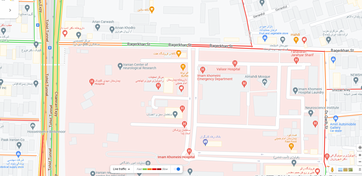Hypofractionated versus standard chemoradiotherapy in the definitive treatment of uterine cervix cancer: interim results of a randomized controlled clinical trial

Purpose
Concurrent chemoradiation has been the mainstay of treatment for cervix cancer. We aimed to evaluate the non-inferiority of hypofractionated chemoradiation.
Methods
This study was designed as a phase 2, 1:1 randomized, investigator-blinded, controlled, non-inferiority trial and we report the interim results after 50% accrual. Cervical cancer patients with FIGO stages IIA–IIIC were recruited from April 2021 to September 2022. The intervention consisted of 40 Gy of 3D-conformal radiation therapy (RT) in 15 fractions over 3 weeks. In the control group, patients received standard chemoradiation of 45 Gy in 25 fractions over 5 weeks. Both groups received concurrent weekly cisplatin (40 mg/m2). Intravaginal brachytherapy of 28 Gy in 4 weekly fractions was delivered starting 1 week after the end of chemoradiation. The primary outcome was complete clinical response(CCR) at 3 months. Secondary outcomes included acute gastrointestinal (GI), genitourinary(GU), skin, and hematologic toxicities. A p value less than 0.05 was considered significant for analyses.
Results
59 patients were randomized; 30 in the control group and 29 in the intervention group. 20/30 (66.7%) of the patients in the control group and 19/29 (65.5%) in the intervention group achieved a CCR (absolute difference of 0.011, 95% CI − 0.23 to 0.25, p value: 0.13). There was a significantly higher rate of acute grade ≥ 3 GI toxicity in the intervention group (27.6%) compared with the control group (6.7%) (p value 0.032).
Conclusions
Despite an absolute difference of 1.1% in the 3-month CCR, our interim analysis failed to show the non-inferiority of the hypofractionated chemoradiation. Due to the higher GI toxicities, we will continue this trial using intensity-modulated radiation therapy.






ارسال نظر